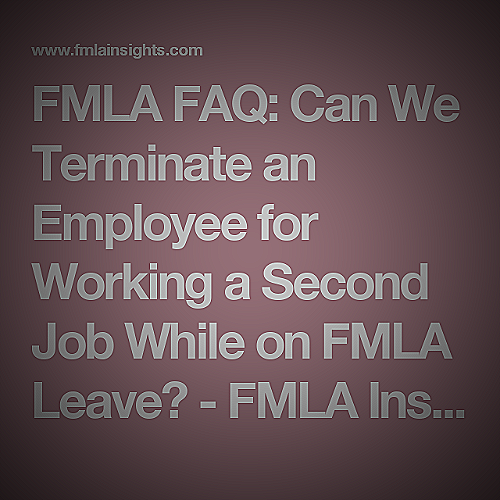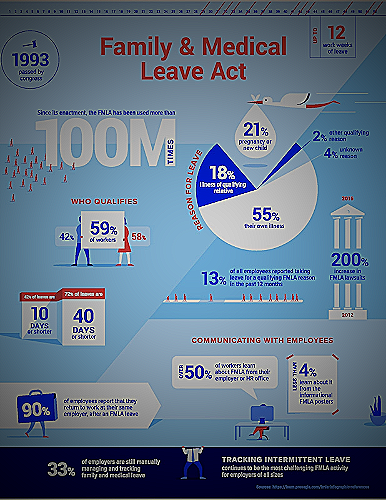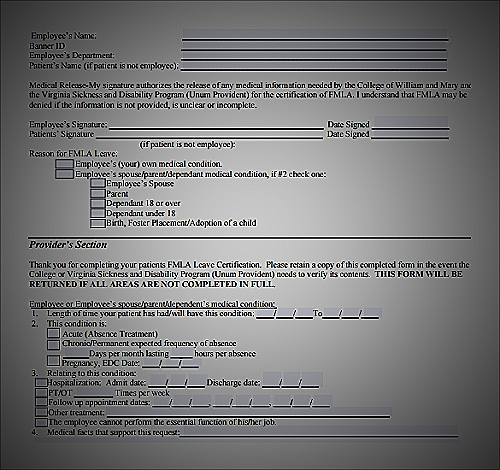2023 Advice for Employees Who Don’t Qualify for FMLA: What Can You Do?
Overview of FMLA and its eligibility criteria
The Family and Medical Leave Act (FMLA) is a federal law that enables eligible employees to take a maximum of 12 weeks of unpaid leave in a year to handle personal or medical issues, such as to care for a child, spouse, or parent with a serious health condition, or for the employee’s own serious health condition. However, not all employees are eligible for FMLA leave.
Employees are eligible for leave if they have worked for their employer at least 12 months, at least 1,250 hours over the past 12 months, and work at a location where the company employs 50 or more employees within 75 miles. If employees do not meet these criteria, they do not qualify for FMLA leave.
Therefore, in this post, we will discuss what employees who do not qualify for FMLA leave can do.
Are you struggling to figure out what to do if you don’t qualify for FMLA? Check out this YouTube video titled “The Do’s and Dont’s of FMLA” to get some helpful tips and advice.
If you’re dealing with employment problems and need some leave advice or remote work guidance, this video is a must-watch. Learn from the experts and find solutions to your problems with the help of this informative content.
Other Leaves of Absence Options
If you don’t qualify for FMLA, there are still other leave options available to employees. One option is personal leave, which allows employees to take time off for personal reasons, such as attending to a family matter or addressing a personal health issue.
Most companies have a policy for personal leave, which should be reviewed prior to the request.
Another option is sick leave, which covers absences due to illness or injury. Sick leave policies vary based on the employer but typically stays within a certain number of days.
It is important to review your company’s policies on sick leave and pay prior to taking any leaves.
Similarly, vacation time is an option for those employees who need a break from work. Employees earn vacation time as they work, and can take it when they please.
However, when approaching human resources or a manager for a leave of absence, it’s important to approach the situation professionally. Take the time to check your company’s policies regarding leaves and pay, and be prepared to articulate your specific request clearly and with plenty of advanced notice.
This will help ensure a positive outcome.

State-specific Leave Laws
For employees who don’t qualify for FMLA, state-specific leave laws may provide coverage. However, these laws vary from state to state, and it’s important to research and determine eligibility.
Several states have their own family and medical leave laws that are similar to, or more expansive than, the federal FMLA. These states include California, Connecticut, Hawaii, Maine, Minnesota, New Jersey, Oregon, Rhode Island, Vermont, Washington, and Wisconsin.

For example, California provides up to 12 weeks of unpaid family leave to eligible employees who work for an employer with 50 or more employees. Other states provide similar benefits, but have different eligibility requirements and duration of leave.
To determine eligibility, employees can check their state’s labor department website or speak with their HR representative.
Disability Accommodation
If an employee does not qualify for FMLA, there are still options available for those who need time off from work due to a disability. Disability accommodation laws require employers to make reasonable accommodations for employees with disabilities that may impact their job.
Reasonable accommodations can include adjustments to equipment, modified work schedules, or even allowing for telecommuting. The Americans with Disabilities Act (ADA) requires employers with 15 or more employees to provide reasonable accommodations for qualified employees with disabilities, and the accommodations should not cause an undue burden on the employer.
If an employee needs a reasonable accommodation, they should request it from their employer, who will then evaluate the request and determine if it can be made without causing undue hardship. It is important for employees to communicate their needs clearly with their employer and provide any necessary medical documentation to support their request.
It is also important to note that if an employee’s disability prevents them from performing essential job functions, even with a reasonable accommodation, their employer may be able to terminate their employment. However, employees are protected from discrimination based on their disability, and employers must take steps to provide reasonable accommodations before taking any adverse employment action.
Overall, while FMLA may not be an option for every employee, disability accommodation laws can provide important protections and support for those who need time off from work due to a disability. It is important for employees to understand their rights and communicate their needs clearly with their employer.
Medical Certification and Documentation
When requesting a leave of absence, providing medical certification and documentation can be crucial, especially when an employee does not qualify for FMLA. This documentation can help an employer understand the employee’s medical condition and the reasons for their absence.
Medical documentation should include the employee’s diagnosis, treatment plan, and expected duration of the condition. The certification should be signed by a healthcare provider and dated.
Employees need to ensure that they provide complete and accurate medical documentation to avoid complications or delays in their leave request.
Employers can verify the medical documentation provided by the employee by obtaining a second opinion or consulting a healthcare provider or a medical review company. They can also request additional information that may be necessary to determine whether the employee’s condition qualifies for leave.

Conclusion
If you don’t qualify for FMLA, there are still options available for taking a leave of absence. You may be eligible for state family medical leave laws, parental leave, or disability leave.
If these options are not available, you may be able to negotiate a period of unpaid leave or use PTO/sick days. It’s important to communicate with your employer and understand your rights under the ADA and ADAAA, which may still protect your job and wages during a non-FMLA medical leave.

